 Returning to Saint Jean Pied de Port along the Nive River
Returning to Saint Jean Pied de Port along the Nive River This drive epitomizes the old saying that "It's not about the destination; it's about the journey."
Taking D932 and D918, you'll pass through numerous Basque villages worth visiting. The most well-known are probably Espelette, Cambo Les Bains, Itxassou, Louhossoa, and Bidarray, but there are many others where you can spend an hour or two visiting the local churches, tasting the local cheeses, honey, sausages, and other artisanal products.
Since it had been a few years since we'd done the drive ourselves, Karen and I decided to revisit the area. Our first stop was Espelette.
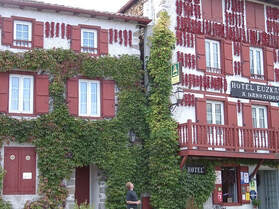 Peppers drying on a hotel in Espelette
Peppers drying on a hotel in Espelette The village of Espelette sits atop a hill with views of the Pyrenees. In the fall, most of the buildings in the village itself and all of the nearby farmhouses are covered with Espelette peppers, hung to dry. You can buy the ground pepper itself, or sample countless products ranging from spiced wines to spiced ice cream. In late October, thousands of people from all over the world descend on Espelette for the Fete du Piment d'Espelette - Espelette Pepper festival. With limited access and parking, we tend to avoid the Fete, but Espelette is a great place to visit the rest of the year.
 Gardens at the Villa Amaga (photo by Harietta117)
Gardens at the Villa Amaga (photo by Harietta117) 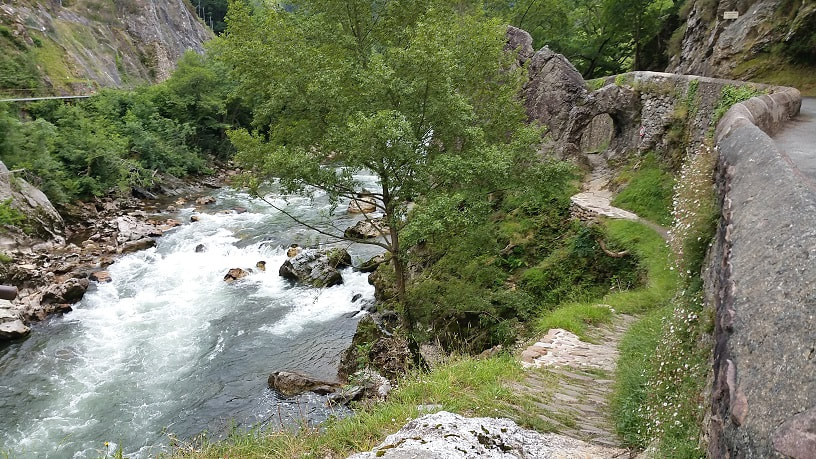 The Pas de Roland along the Nive River with its arch (upper right)
The Pas de Roland along the Nive River with its arch (upper right) Roland was Charlamagne's nephew and comanded a force charged with protecting the Franks from the Bretons. Later in his career, in 778 AD, he led an army into Spain conquering countless villages. However, he met his death at the Pas de Roland where Basques ambushed the Franks in this narrow gorge carved by the Nive River. Several legends try to explain the creation of the arch. Most claim that Roland himself carved it with his sword to escape the Basque attacks. But the Pas de Roland is recognized by the Basques as proof of their resilience against invading armies.
In my previous post Ainhoa et La Chapelle d’Aubépine – a spectacular hike in the Pyrenees,
I mentioned the GR10, the 538-mile trail from the Atlantic to the Mediterranean. If you continued on the trail from La Chapelle d'Aubepine, you'd reach Itxassou, one of many stops along the GR10.
Leaving Itxassou and continuing on the D918, you'll pass Bidarray, which is known for its white water rafting on the Nive River, and Louhosoa, a cute village with countless places to try local cheeses, the Biscuiterie Basque, where you can sample Basque baked goods, and the church with its amazing acoustics - perfect to hear Basque songs during a Mass.
From here, the D918 runs very close to the river. You can stop and picnic at several spots. Ultimately, you'll come to Saint Jean Pied de Port. Arriving, it doesn't look like much. You should park and make your way into the walled city.
The medieval city of Saint Jean Pied de Port is dominated by the Citadel. Once a fortress designed to spot invading Spanish armies, it's now a school.
In the past, Karen and I have climbed up the hill to the Citadel and then returned via a narrow path with very steep steps on the south side of the Citadel.
Since we'd been to the Citadel several times before, we decided to walk around the back of the edifice before descending back to the city.
As we were about to take the rugged steps down on the south side, we spotted a single-track trail on the left that seemed to head east above the river. We followed the trail and were pleased to find that it ultimately came down to the river a mile or so above the main part of Saint Jean Pied de Port. We followed the river back, stopping regularly to admire the views, look for trout in the river, and marvel at the hatch of thousands of water spiders.
Back in the village, we found a small creperie and took a table overlooking the Nive. After a leisurely late lunch, where we reflected on our enjoyable hike and reviewed our photos, we made our way back to Guethary just as the rain began.
If you're in the Basque region, take a day and explore these inland villages. You won't be disappointed.
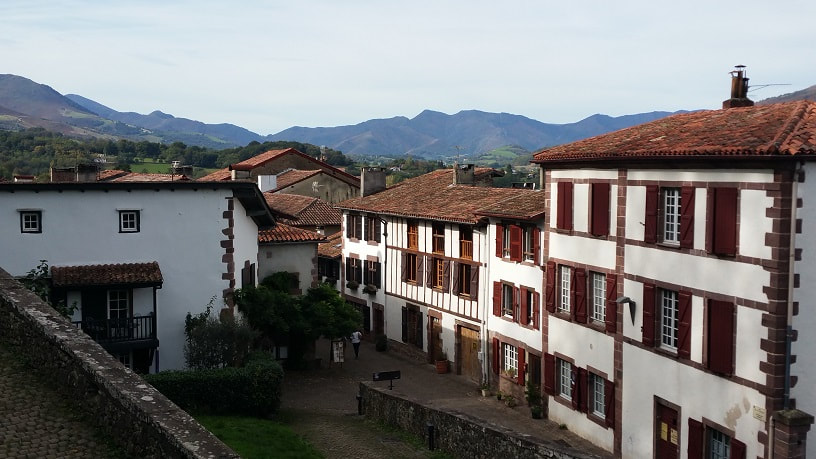
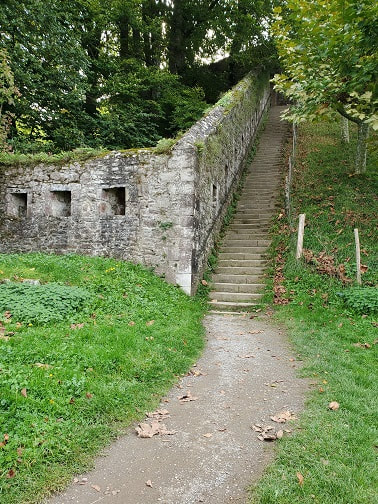
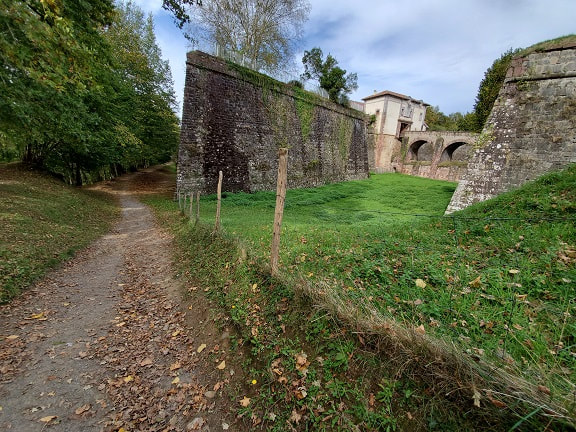



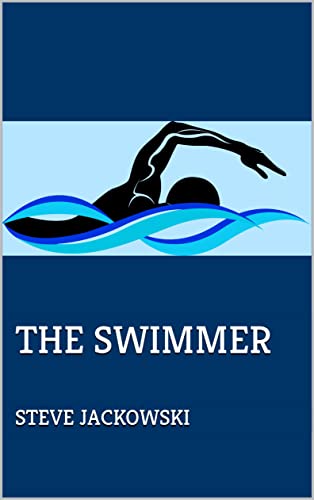
 RSS Feed
RSS Feed